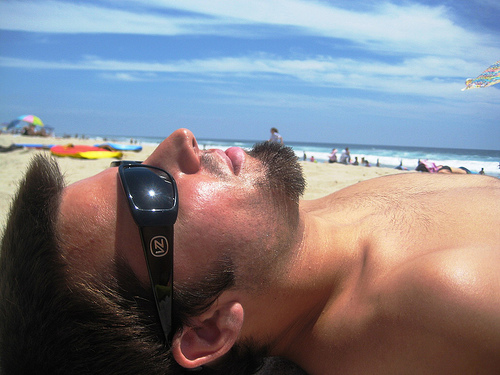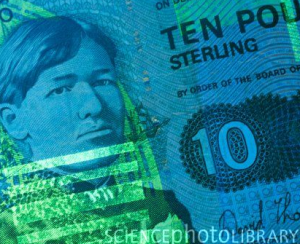We spent some time looking at the physics of ultraviolet radiation last week.
 image courtesy of sonrisaelectrica
image courtesy of sonrisaelectrica
The section of the electromagnetic spectrum with wavelengths ranging from 10nm to 400nm is called ultraviolet radiation (uv for short). Sunlight contains uv rays and it’s those uv rays that are responsible for the suntan you get during the summer holidays. This Australian animation shows how the ultraviolet in sunlight causes our skin to tan and explains why too much uv will damage our skin. The SunSmart page has loads of information on staying safe in the sun.
The damage that uv can do to cells is put to good use in some sterilisation equipment, such as this bottle for safe drinking water and the toothbrush sanitiser shown below.
The Nobel Prize for Medicine was awarded to Niels Rydberg Finsen in 1903 for his research into the effects of ultraviolet on the bacteria that cause tuberculosis.
There is a Bank of England leaflet (pdf) with further information on the security features in our banknotes.
Remember that whenever something glows under a uv light, we’re not seeing the uv radiation itself because our eyes can’t detect ultraviolet. Instead, we see the fluoresence; visible light given out in response to the uv falling on the material.
Kuba demonstrated fluorescence in class with some uv hair gel. Here he is with some of the gel in his hair.
but we don’t see anything until we turn on the uv light.
Cool, eh?
You can even buy genetically modified tropical fish that glow under uv light.







